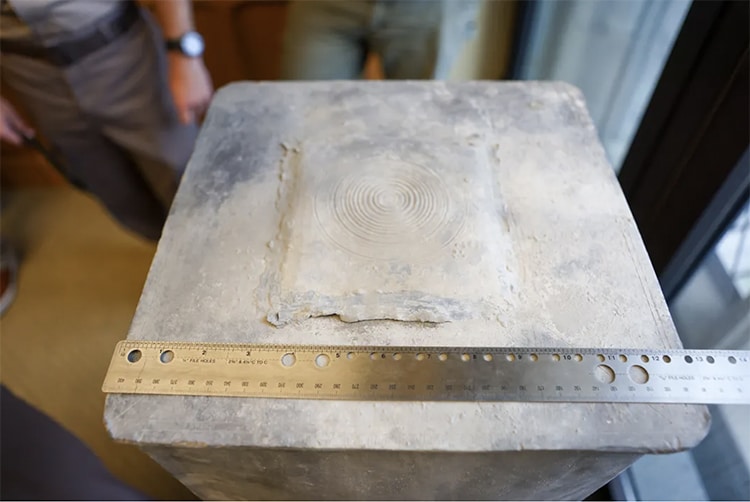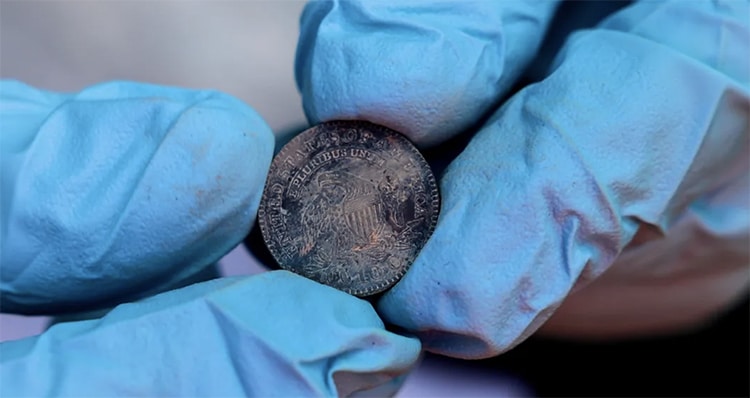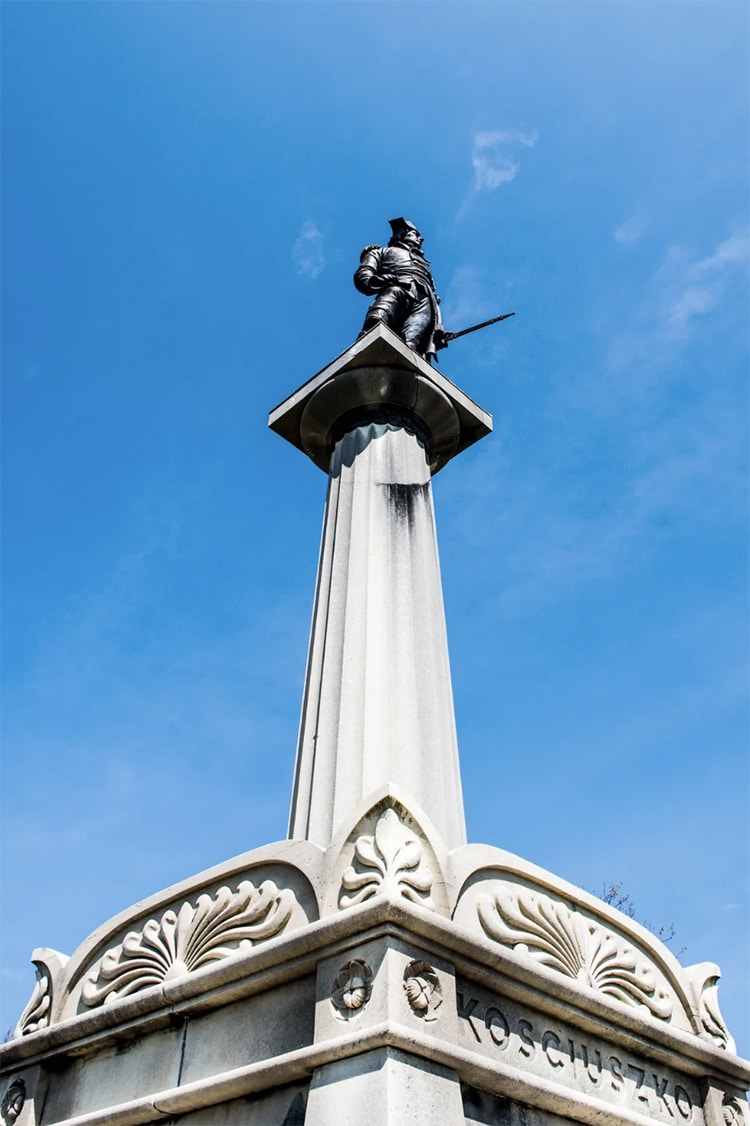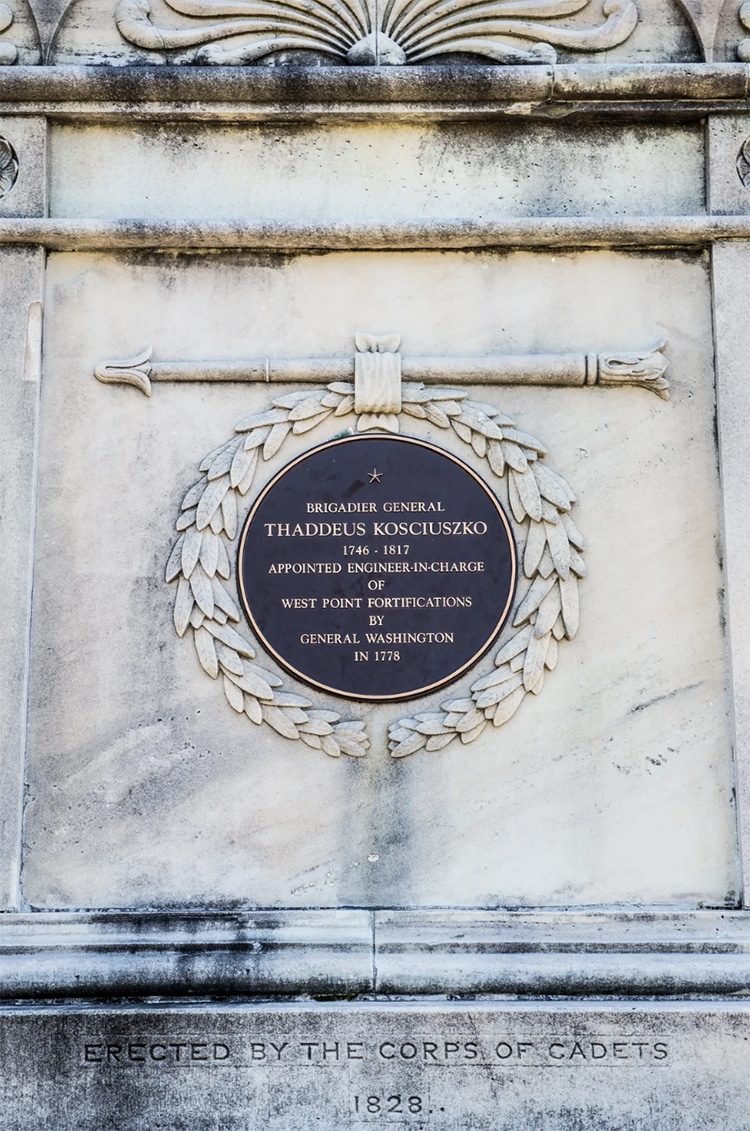
The time capsule discovered in the statue base. (Photo: United States Military Academy)
West Point is known as a prestigious military academy, producing many of the nation’s generals since its founding in 1802. Known officially as the United States Military Academy, it can also count two American presidents among its alumni. Such a long history is sure to come with good and bad moments, and even a few surprises. Recently, renovations uncovered a box hidden in the base of a statue of a Revolutionary War hero. It turned out to be a time capsule that West Point later opened during an assembly with great fanfare. The interior did not yield treasures at first, only silt. However, after some sifting, six historic coins and an Erie Canal commemorative medal were uncovered.
The statue which yielded the time capsule is of Thaddeus Kosciuszko, a Polish immigrant. While not a West Point alum, he fought with the Continental Army during the Revolution. He died in 1817, and shortly afterward his statue was erected on the dime of admiring cadets. Its stone base was completed in 1828, although the column and statue atop was added in 1913. It is thought cadets tucked the time capsule into the base of the statue around 1828, and its existence remained unknown for almost 200 years. It is still unclear why the capsule was hidden in the first place.
The find greatly excited the university, which began to hype a ceremonial first opening to be filmed and presented on stage. Current students speculated what might be inside. However, when Paul Hudson, a West Point archaeologist, opened the box the waiting crowd received a disappointing news flash. “We don’t want to think that they went to all of this trouble to put this box in the monument and not put anything in it,” he said. But it required detailed lab work to eventually discover what else the box might held apart from the obvious pile of silt that may have once been something organic, such as paper.
Sifting carefully through the silt with wire, Hudson and his team found six silver early American coins. They date from 1795 to 1828. There was also a small medal from 1826 that commemorated the finishing of the Erie Canal’s construction in 1825. A pivotal moment in United States history, the canal connected the great waterways of the northeast to produce thriving industrial centers across upstate New York and fill the bustling ports of New York City, down the Hudson River. The coins and the medals were clearly chosen for the time capsule for their meaning to the historic cadets. Brigadier general Shane Reeves, a dean, said in a statement, “There is no better opportunity to take a moment and be inspired by our Army and academy’s connection through time that is represented by that capsule and one of our nation’s true heroes.”
A 200-year-old time capsule found in a West Point statue turned out to be full of silt and surprises.

A historic coin found in the silt inside the time capsule. (Photo: United States Military Academy)
Eventually, six coins from the late 18th and early 19th centuries emerged, along with a medal.

The statue of Thaddeus Kościuszko. (Photo: United States Military Academy)

The dedication to the Revolutionary War
hero. (Photo: United States Military Academy)
h/t: [Smithsonian Magazine]
All images via United States Military Academy.
Related Articles:
Amateur Metal Detectorist Discovers 13th-Century Gold Coin Featuring Henry III
5,000-Year-Old Iranian Vase Features the First Known Animation
Perfectly Preserved 3,000-Year-Old Bronze Sword Discovered in Germany
Dutch Metal Detectorist Discovers a Medieval Hoard of Gold Jewelry and Silver Coins
